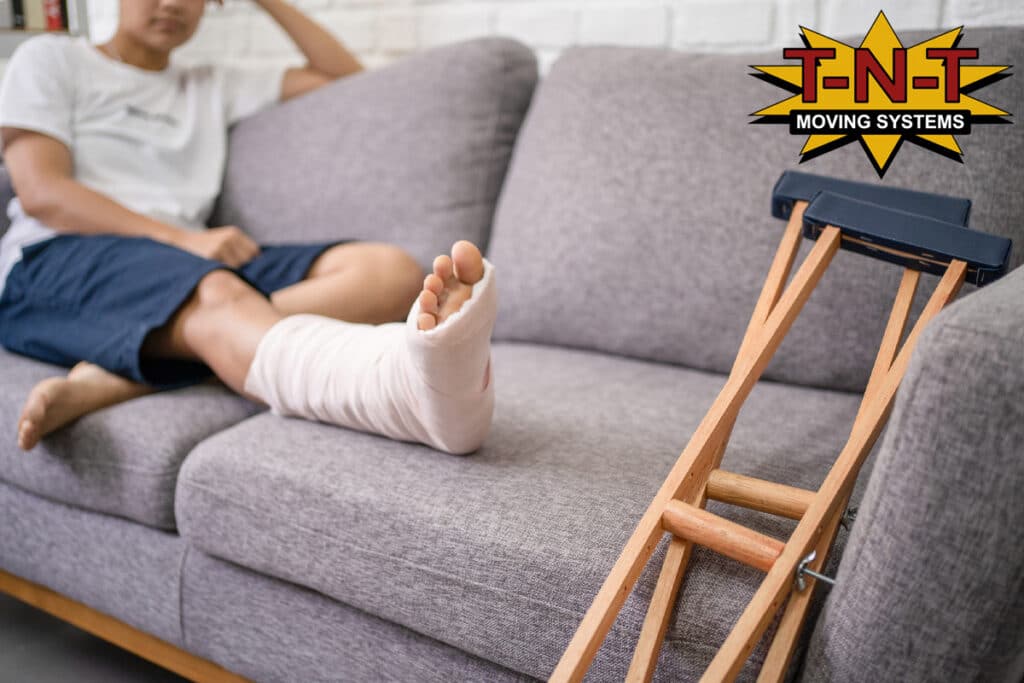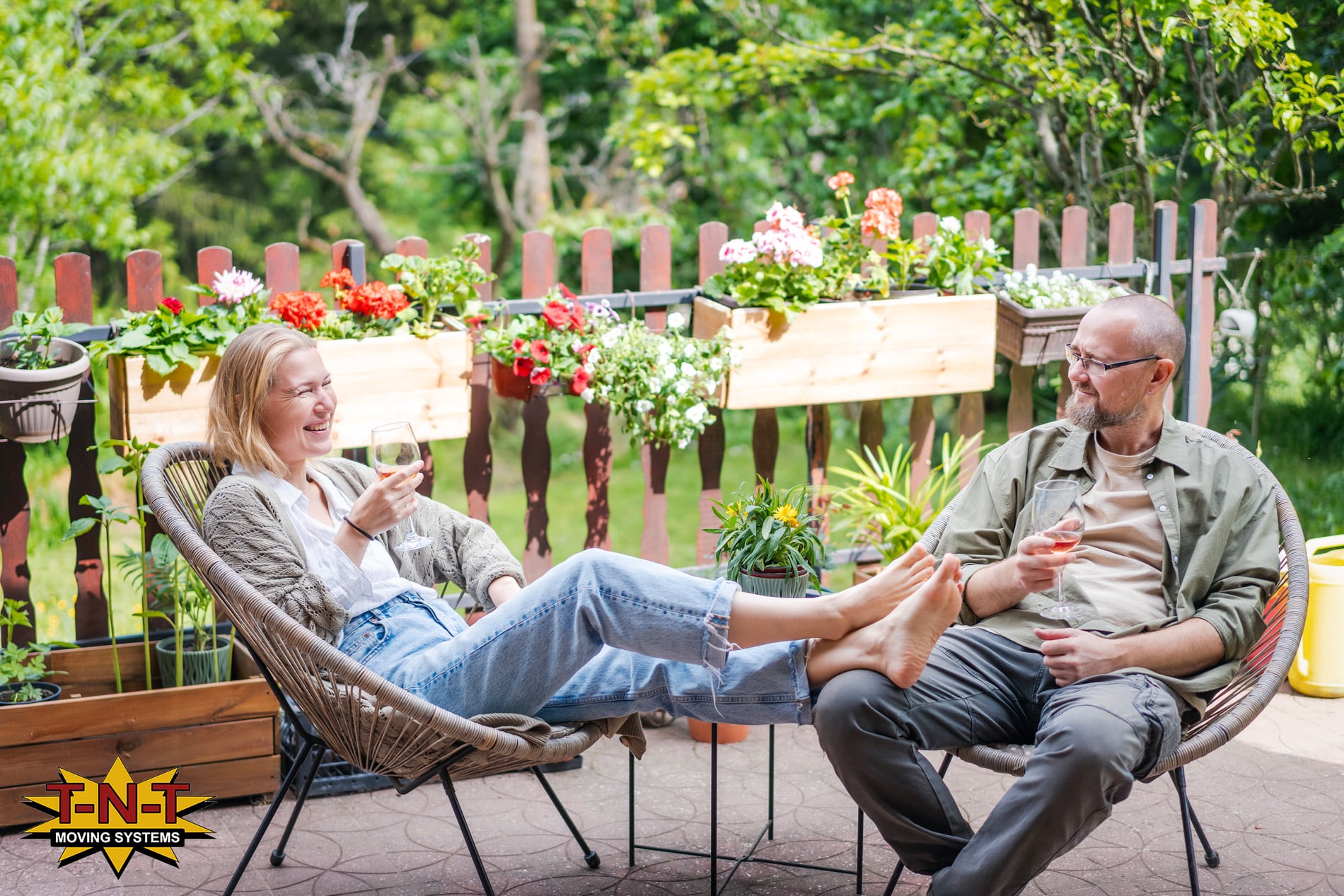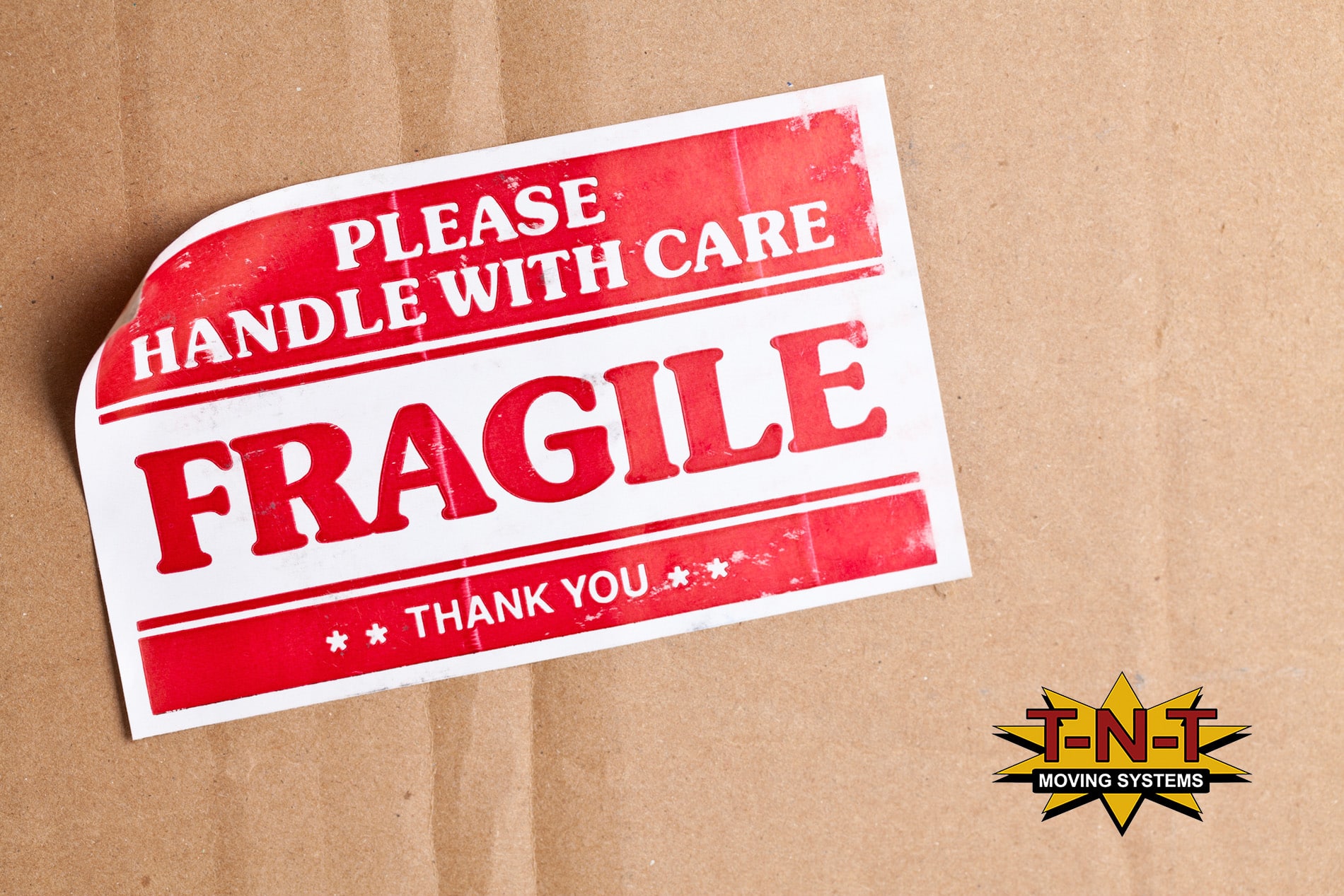Moving Safety: 7 Quick Tips for Preventing Injuries While Moving Your Belongings
Back injuries, smashed fingers, twisted joints, cuts, bruises–ah, the joys of moving! It doesn’t matter how strong or fit you think you are, the act of moving boxes and furniture is sure to find and use muscles you didn’t know existed. Why do we put ourselves through this? Moving is a part of life and, luckily, a few tweaks to your method of moving could save you from straining your lumbar.

It only takes a few moves for family, friends, or yourself to make you question the process: is there not another way? Well, you have two options: hire professional movers like T-N-T Moving Systems or do it yourself. If you choose the latter, there are ways to work around the potential injuries a big move can induce. To help minimize your risk of injury, we’ve come up with seven helpful tips–things we have learned along the way–and we’re happy to share them!
1. Advanced Organization
Anyone can plan ahead and be organized, but if one does not plan ahead in an organized manner, chaos is most likely the outcome. Injuries during a move usually occur when we’re caught off guard and underprepared to handle a particular situation. Without a plan, we take shortcuts and end up pushing ourselves beyond our limits. Ideas like, “I don’t need a brake, I need to make up time” or “I’ll get a big drink of water once I’m finished here” seem reasonable when we’re unorganized. And this is where chaos takes its root.
Begin your move by ticking items off a list:
- Source the boxes you will need
- Get rid of the items you don’t want to keep (there will be more of these than you expect).
- Line up your helpers.
- Set a move date.
Once you’ve these nailed down, create a timeline of what you hope to have moved and by when. Be flexible with your schedule; not everything will work according to your plan, but at least you will have one to follow and keep you organized and, hopefully, injury-free.
2. Prepare Yourself Physically
Strengthening your core is the best physical prep you can do before a big move. Weeks (even months) before a move, set a routine of exercises for yourself. Nothing too intense, maybe some sit-ups or planks. Lifting weights and cycling can help build abdominal and back muscles, which are those mostly used while carrying boxes and the like.
One must-do that goes along with muscle-building is stretching. Even if you decide not to work out, stretching before a strenuous activity can drastically reduce the risk of injury. Here is a good routine for the day of the move:
- Take a short morning walk to get the heart rate going.
- Spend 5-10 minutes rotating your joints–twist your torso to loosen it up.
- Eat a high-protein breakfast–eggs, oatmeal, fruit, avocado…even pancakes!
- During the move, don’t forget to stay hydrated. Taking snack breaks is a good idea as well.
3. Keep Things Light
The quickest way to incur back pain is by lifting too many heavy items. Then there’s also the chance of dropping that heavy item on your toe. To keep these from happening, simply avoid overpacking your boxes. A good rule of thumb is not to go over 40 pounds per box. Sure, you can lift more than that, but keep in mind you will be lifting 40 pounds over and over again–and walking up or down stairs, etc.
Now, consider the larger items: the couch, the bed, the washing machine. Begin by breaking down these larger items as much as possible (take the bed apart, legs off the couch) then make sure you have enough help to actually move them–everybody takes a corner! Use a dolly whenever you can; if you don’t have one, buy or rent one for sure. It’s better to wait until you have enough people and a dollie than to rush the move of a bigger item.
4. Wear the Right Clothing
Believe it or not, what you wear on the big day can play into your level of safety. Longer or loose articles of clothing can easily get snagged or torn, which can throw you off-kilter or even get you stuck in a place you would rather not be. Opened-toed shoes…do we even need to go there?
Keep those toes from getting smashed and keep yourself moving without interruption by wearing closed-toed, athletic shoes or boots, and stretchy form-fitting clothes (think workout attire). If you’re prone to pulling muscles, or if you’re presently on the mend, consider adding a back brace or other additional protective gear. Remember, this isn’t a fashion show, it’s a move; it’s better to overprepare than to risk the chance of even the smallest injury. Take care of yourself and the move will follow!
5. Create a Clear Path for Your Move
You have a box in your hands. It’s around 40 pounds, so not too heavy, but since you’re holding it up to your chest and neck, it’s impossible to see where you’re walking. And without having a clear path in front of you, you won’t be walking upright much longer. Take the time to create or clear a path directly from the area you are moving to the moving van. Since everything is already boxed up, and since you have already rid your home of the clutter you no longer need, making a wide path shouldn’t take too much time.
*Another tip to keep you from falling over yourself and others: If you have young children, send them to a neighbor’s or family member’s house for the day. You don’t need something else to physically or verbally trip you up.
*And another: When walking with boxes or large objects, only walk forwards or backward. Never walk sideways, as this can twist your back and knees and increase the risk of injury.
6. Form Is Everything
“Lift with the legs, not with the back!” is great advice to scream at each other whilst in the midst of a move, but if you really want to do it right, add these bits to your lifting method:
- When you squat to pick up a heavier item, create a wide base with your feet by keeping them shoulder-width apart. This way, when you lift the object, all the strain will go to your legs rather than other, more sensitive, parts of the body.
- Once you lift the object, keep it up high, around your chest and neck area. Keep that back straight and breath in from the nose and out through the mouth.
- Lastly, keep the item pressed against your body instead of holding it out in front of you. Make sure the weight of the item is evenly distributed and that it’s all connected and running in line with your body.
7. Get the Right Help
Nobody likes asking for help with a move; likewise, nobody likes being asked to help with a move. But it’s worth the pain of finding people because moving alone is not worth the risk of injury or damage to your goods. The key here is to begin asking well before the actual move. Ask more people than you need–then let a few off the hook if everyone is available. Entice with food and drinks, whatever it takes to get some worthy hands to help you through a solid day (or days) of moving.
When it comes to moving, you gotta do it right and never do it alone. And if at all possible, don’t do any of it. Let T-N-T Moving Systems do it for you!




